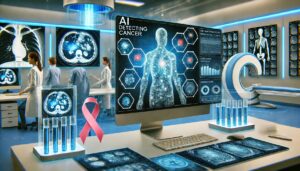Vaccines are one of the greatest achievements in modern medicine, playing a critical role in protecting individuals and communities from infectious diseases. As a cornerstone of public health, vaccines not only prevent illnesses but also reduce the burden on healthcare systems, improve life expectancy, and contribute to global health equity.
In this blog, we’ll explore how vaccines work, their importance in public health, how they relate to technologies like telemedicine, and why widespread vaccination is crucial for disease prevention.
What Are Vaccines and How Do They Work?
Vaccines are biological preparations that provide immunity against specific diseases. They stimulate the body’s immune system to recognize and fight pathogens, such as viruses or bacteria, without causing the illness itself.
When a person receives a vaccine:
- The immune system detects the weakened or inactivated virus/bacteria (or a part of it).
- It builds antibodies to fight it off.
- The body “remembers” the pathogen, enabling a faster response if exposed again.
This process is called immunization, and it’s the foundation of disease prevention at both individual and community levels.
Why Are Vaccines Essential in Public Health?
1. Preventing Outbreaks and Pandemics
Vaccines are essential for stopping the spread of infectious diseases such as measles, polio, influenza, and more recently, COVID-19. Widespread vaccination campaigns can eliminate diseases entirely, as seen with smallpox, or significantly reduce outbreaks, saving millions of lives annually.
When a large portion of the population is vaccinated, herd immunity occurs, indirectly protecting those who cannot be vaccinated, such as infants or immunocompromised individuals.
2. Reducing Healthcare Burden
Widespread vaccination leads to fewer hospital visits, less need for medications, and lower treatment costs. This allows healthcare providers to focus on other medical needs. It also decreases lost productivity from illness-related absenteeism.
Telemedicine platforms have further supported vaccination efforts by:
- Providing virtual consultations for vaccine education
- Scheduling appointments
- Answering vaccine-related concerns remotely
3. Safeguarding Future Generations
Thanks to them, many diseases that once caused childhood deaths are now rare or even eradicated. Continued immunization ensures future generations inherit a world with fewer health threats. For example, polio is nearly eliminated due to aggressive global vaccination efforts.
The Role of Telemedicine in Vaccine Awareness and Access
1. Using Telemedicine to Educate About Vaccines
Telemedicine platforms have become key tools for public education. Through virtual consultations, healthcare providers can:
- Explain the importance of vaccines
- Clarify myths and misconceptions
- Offer guidance on vaccine schedules and booster doses
This is particularly helpful in rural or underserved areas where access to in-person care may be limited.
2. Telemedicine for Pre-Vaccination Screening
Before getting certain vaccines, individuals may need health screening to determine eligibility or check for allergies and contraindications. Telemedicine allows patients to complete these screenings safely and conveniently from home.
3. Post-Vaccine Follow-Up Through Telemedicine
Some individuals may experience mild side effects after receiving a vaccine. Telemedicine enables patients to follow up with healthcare providers without visiting a clinic, reducing stress and improving post-vaccine care.
4. Increasing Reach in Remote Areas
Vaccination campaigns often struggle in rural regions due to limited infrastructure. Telemedicine, coupled with mobile healthcare units, bridges this gap by offering education, virtual consultations, and real-time support to field healthcare workers.
Vaccine Safety: What You Should Know
1. Are Vaccines Safe?
Yes. Vaccines undergo rigorous testing in multiple phases before they are approved for public use. Even after approval, they are continually monitored for safety by health authorities like the World Health Organization (WHO) and Centers for Disease Control and Prevention (CDC).
Common side effects are usually mild and include:
- Soreness at the injection site
- Mild fever
- Fatigue
Serious side effects are rare, and the benefits of vaccination far outweigh the risks.
2. Myths vs. Facts
There are many misconceptions about vaccines that can discourage people from getting vaccinated. Here are a few common myths debunked:
- Myth: Vaccines cause the disease they are meant to prevent.
Fact: Vaccines use inactive or weakened parts of the virus/bacteria and cannot cause the disease. - Myth: Natural immunity is better.
Fact: While natural infection may produce immunity, it can also cause severe complications or death. Vaccines offer protection without the risks of illness.
For more information on vaccine myths and facts, you can visit the World Health Organization’s vaccine safety page. ✅
Types of Vaccines and Their Use Cases
There are different types of vaccines, each designed to combat specific pathogens effectively:
- Live-attenuated vaccines (e.g., MMR, yellow fever)
- Inactivated vaccines (e.g., polio, hepatitis A)
- Subunit, recombinant, polysaccharide vaccines (e.g., HPV, whooping cough)
- mRNA vaccines (e.g., COVID-19)
- Toxoid vaccines (e.g., tetanus, diphtheria)
The type of vaccine used depends on the disease, the target population, and public health goals.
How to Stay Up to Date With Vaccines
Keeping track of vaccinations is important at all ages. Here’s how to stay on top of your vaccine schedule:
- Consult with your healthcare provider annually about your vaccination needs.
- Use government or local health portals to check recommended vaccines.
- Schedule vaccine consultations via telemedicine, especially for kids, seniors, or immunocompromised people.
If you’re seeking more information on vaccine schedules and immunization plans, visit our immunization awareness resource page. ✅ (Internal link)
Conclusion
Vaccines are one of the most effective tools in modern medicine to safeguard public health. They have saved millions of lives, controlled epidemics, and are paving the way toward eradicating more infectious diseases. Combined with innovations like telemedicine, vaccine education and access are reaching more people than ever before.
Understanding how vaccines work, recognizing their importance in disease prevention, and ensuring widespread coverage is not just a medical necessity but a public health priority. If you haven’t reviewed your vaccination status lately, schedule a consultation with your healthcare provider—virtually or in person—and do your part to protect yourself and your community.




